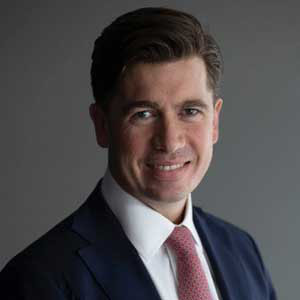The recycling and repurposing of electric vehicle batteries is a nascent industry – but one that is forecast to expand rapidly, to a value of $14bn by 2040 in the US and Europe alone.
From practically a standing start, RBC foresees the annual recycling market growing to 700,000 tons by 2025, 1.8m tons by 2030, and 7.9m tons by 2040.
As panel chair Tyler Broda, of RBC Capital Markets Equity Research, told the Global Battery Value Chain Conference, the industry is still in an embryonic stage. So how do the pioneers in this space plan to grow their operations and achieve profitability?
Same process, different models
While companies are pursuing different business models, the recycling process is broadly similar. As Chris Reed, CEO of Neometals, explained, batteries are first disassembled and shredded. “We’re unscrambling the egg,” he said.
Lithium and metals are recovered from the resulting ‘black mass’. Battery grade metals are sold back to manufacturers, while the ground cathode and anode material can be fed into hydrometallurgical processes to make fertilizer.
Companies are working on optimizing their processes, but Anders Bonde Bakken, CFO of Hydrovolt, believes there will be convergence. “In the long run, I think it’s going to standardize. In five years, it’s going to be a very similar process for everyone,” he said.
Fortum is among the businesses developing its own technologies for mechanical separation. Its Head of Battery, Tero Hollander, believes companies using legacy technologies to recycle consumer batteries will be left behind, especially given new recycling legislation in Europe: “My opinion is that those technologies cannot really compete in the market in future.”
“We’re unscrambling the egg.”
CHRIS REED, CEO, NEOMETALS
Repurposing for a second life
Recycling is not the only option for batteries that have reached the end of their car lives. Eco Stor is among the players giving batteries a second life.
The company’s CEO, Trygve Burchardt, explained that a battery whose capacity becomes too low for car use still has potential value as an energy storage product.
“If you open this battery up, it’s not a product any more – it is hazardous waste,” he said. Instead, Eco Stor keeps the battery intact and programs it for energy storage. After 10 years or so in this second life, it can be recycled.
This is a particularly attractive option for LFP batteries, which, unlike NMC batteries, contain no nickel and cobalt. In Europe, OEMs have responsibility for recycling, so they prefer to defer that cost through second life, Burchardt explained.
“For NMC batteries, the value of the energy is still higher than the material value. So it makes sense to put it into second life, if you do it in a cost-effective way,” he added.
“For NMC batteries, the value of the energy is still higher than the material value, so it makes sense to put it into second life.”
TRYGVE BURCHARDT, CEO, ECO STOR
Rich sources of batteries
Already, there is no shortage of battery supply. In Norway, where 80% of new cars sold are electric vehicles, Eco Stor sees many returns, including early versions of the Nissan Leaf battery, which was first introduced in 2011.
Other sources include batteries from the 1% of cars that are involved in accidents every year; those returned to OEMs under warranty; and safety recall batteries.
Fleet vehicles, such as buses, are another rich source, said Burchardt. “At 80% capacity, the battery is exchanged in a bus, so it’s a very high quality second life product coming out of fleet vehicles,” he said. “We don’t see any issues on supply of batteries.”
Volumes will grow as a new breed of gigafactories go live in Europe over the next five years, Bakken said. “Even experienced battery producers, when they go live with a new plant, have quite a high scrap rate,” he pointed out.
Investing for a growing market
Players are striving to install capacity to match the growth of the market. Bakken estimated that the permitting process for a new plant takes 10 months to a year, while scaling up a plant takes a further year.
Given the unpredictable nature of waste flow growth, he said, “you have to have some recyclers who dare to maybe build overcapacity for a while”.
Hollander said continued investment was essential. He estimated Fortum would begin seeing profit in 2027. It could achieve profitability sooner if it ceased investing, but that made no sense given the company’s target to capture 20 to 25% of the ultimate market.
“The amount of battery waste doubles every five years. In 2030 there should be 300,000-plus tons of black mass in Europe for recycling,” he said.
Neometals’ approach is to partner with the auto industry. “We’re prepared to share the economics and ultimately deliver the lowest cost of recycling to the carmakers,” said Reed.
“We will build them a plant, we will commission it, we will teach them – we’ve entered into a five-year R&D agreement with Mercedes Benz where we’re essentially teaching them how to recycle.”
“You have to have some recyclers who dare to maybe build overcapacity for a while.”
ANDERS BONDE BAKKEN, CFO, HYDROVOLT
“The amount of battery waste doubles every five years – in 2030 there should be 300,000-plus tons of black mass in Europe for recycling.”
TERO HOLLANDER, HEAD OF BATTERY, FORTUM



